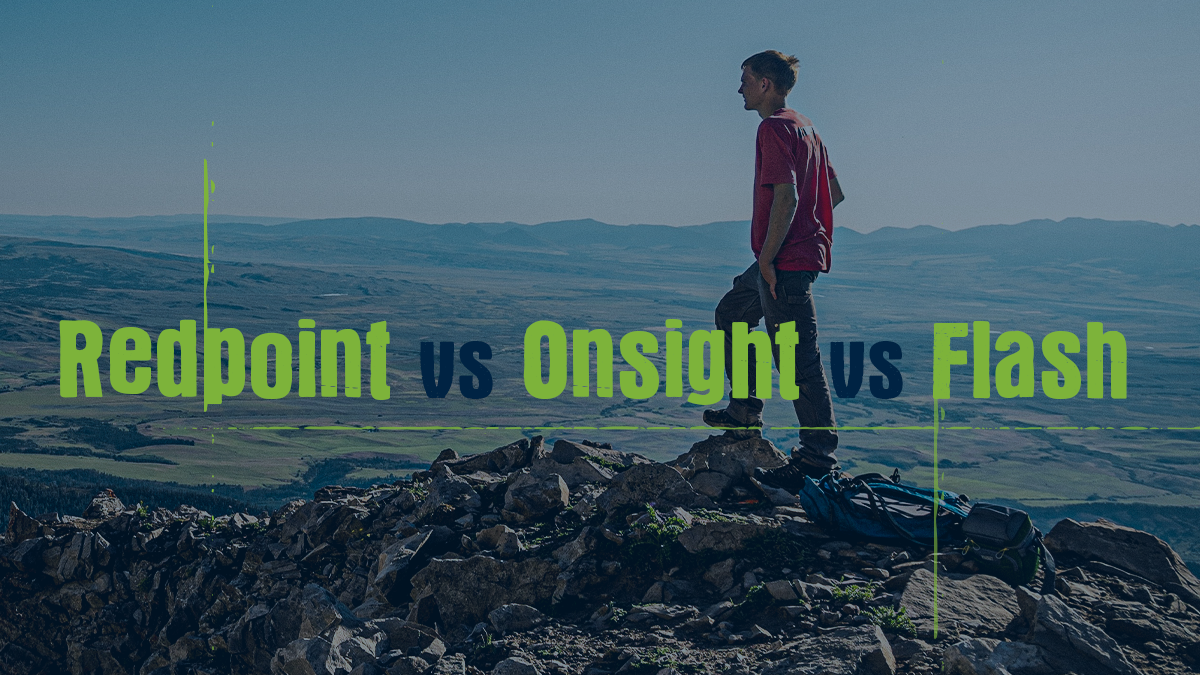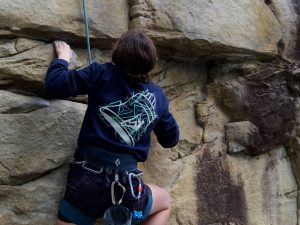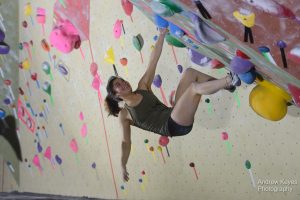“I onsighted that route! I thought it would be at my redpoint level, but I onsighted it!” The climbing world is full of wacky words and phrases, many unknown even to long-time climbers. While you don’t have to have the inside scoop on climbing slang to be successful on the wall, it can be helpful to know what other climbers are talking about when discussing how they climb. In this article, we’ll define two commonly used descriptors in climbing, repoint and onsight, and talk a little bit more about what these words mean.
For starters, these words essentially describe the circumstances in which a climber has completed a route. While some climbers are indifferent to these circumstances about someone completing a route, others see them as helpful in understanding and communicating one’s climbing ability or even see these descriptors as crucial knowledge. Whatever your take, whether you use these terms or not, it can be helpful to understand what others mean when they use these words. Plus, familiarity with them can help you avoid miscommunicating when discussing climbing with others.
Onsight
You can think of “onsight” as cleanly and successfully climbing a route on your first try with zero prior knowledge, experience, or insight. Let’s break down the stipulations for being able to say you’ve climbed something onsight: One, you’ve never climbed the route before- it’s your first attempt (this includes having top roped the route before). Two, you have zero prior knowledge, experience, or insight on the route. This means you’ve never seen it, you’ve never watched anyone else climb it, and you haven’t gotten any beta from others on the climb or how to attempt it. And three, you must successfully complete the route on your first attempt.
When it comes to approaching a climb for the first time and observing the route from the ground before climbing, you may encounter some debate on whether or not this is acceptable if you’re trying to onsight a climb. However, this in-the-moment observation is largely accepted by folks, and completing a route after scheming a move or two from the bottom is still considered onsighting by most. Some climbers also emphasize that an onsite climb must also be “clean” meaning the climber is able to complete the climb without mistakes or too much difficulty. This differentiation makes a little more sense in context with the meaning of redpoint and how it is used to describe one’s climbing ability.
Redpoint
Redpointing refers to successfully climbing a route after having prior practice with the climb. Practice doesn’t have to mean having attempted the route before, although any prior experience on a climb, whether you completed it or not, does count (this includes top roping a route).
While a climber can rest during a redpoint climb, they can’t use the rope or any other aid to do this; they must rely on the rock to support them. If a climber falls during a climb, they must return to the ground and restart the climb for a completed climb to count as redpointing. Finally, redpoint is also sometimes used to describe the top range of an individual’s climbing ability. If someone references a climb as their redpoint, they’re expressing that the climb is about as difficult a route as they can complete.
Flash
Last, we’ll touch on a bonus climbing vocabulary word– one that can be helpful to understand when making sense of how onsight and repoint are used. To flash a climb refers to climbing to the top of a route on your first try without any mistakes or rests but references a climber having had some information about the climb before attempting. This could mean the climber has watched someone else climb the route, read about it online, or gotten the rundown from a fellow climber. Regardless of what information a climber has about a route before they first attempt, flashing a route is considered an impressive accomplishment!
Let’s Review!
Generally, onsighting a climb expresses that you were able to cleanly complete a route without any experience with it. Repointing a climb means you were able to complete a route after previous practice or knowledge of the climb. Redpoint refers to your highest climbing ability, while an onsight climb conveys that you completed a climb more casually, without rests or much struggle.
Remember that while these terms are important for better communicating the circumstances in which a climb was completed or where your climbing skills may be, this context doesn’t have to dictate how you approach climbing or what climbs you’re proud of! Whatever way you climb, whether you’re completing routes or not, every attempt is valuable and offers the chance to learn about, improve, and celebrate your climbing.









